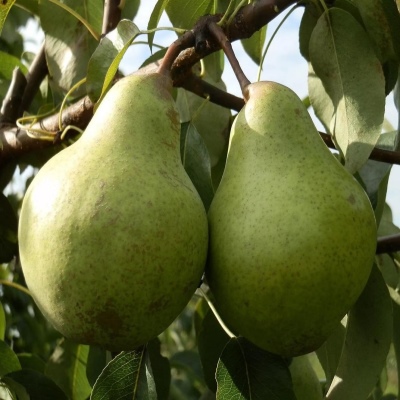
- Authors: selection of the Institute of Fruit Growing of Belarus
- Appeared when crossing: Belarusian late x (Bere gray x Dulia Ostsee) x Oil Rose
- Name synonyms: Pyrus communis Zaveya
- Fruit weight, g: 180-250
- Ripening terms: winter
- Fruit picking time: closer to mid-autumn
- Appointment: dining room, preparation of compotes, preparation of dried fruits
- Growth type: medium height
- Yield: high
- Transportability: good
Such an unusual name for the Zaveya pear can charm many people. But it is important to understand what is behind it, what characteristics this culture has. And therefore, even before the start of gardening work, it is required to collect and analyze objective information.
Breeding history
Pear Zaveya was created in Belarus. And the authorship of the project belongs to the local institute of fruit growing. To obtain the culture, the Belarusian late and oil rose were used. The official synonym for the name is Pyrus communis Zaveya.
Description of the variety
Pear Zaveya is one of the table varieties. It forms medium-sized (up to 4 m) trees. Their crown is shaped like a pyramid. Light brown shoots coexist with glossy medium-sized foliage, painted in a dark emerald color. In inflorescences, from 4 to 6 white flowers are collected, devoid of terry and differing in an even edge.
Fruit characteristics
The usual weight of fruits in this variety ranges from 180 to 250 g. In shape, they are close to a truncated cone. These are large fruits with a dominant green color. When fully ripe, a golden color is achieved. You can store the harvested crop for up to six months.
Taste qualities
Zavea's pulp is juicy. The official description also emphasizes the oiliness of its fruits. The white-green main part of the pear has a sweet and sour taste. Only a thin, but relatively strong peel spoils the impression somewhat. The overall tasting grade of the variety is 4.8 points; the harvest is mainly used to prepare compotes and dried fruits.
Ripening and fruiting
Zaveyu is classified as a common winter pear. Harvesting begins in the first half of autumn. But in most regions this period is closer to its middle. It is believed that the consumer ripeness of pears is reached in January and February. The first harvest takes place at 3 or 4 years of development after planting, and in the future it will be possible to feast on the crop regularly.

Yield
In terms of productivity, this tree is very good. Zaveya is capable of producing up to 50 kg of fruits per plant. True, such a result is achieved only with favorable weather and extremely careful agricultural technology. But there is nothing unexpected in that, because the same requirements and other cultures. It is also useful to emphasize that the harvested pears can be transported over long distances without any problems.
Self-fertility and the need for pollinators
Zaveya is completely self-fertile. For its pollination, it is necessary to plant next to:
Clapp's favorite;
Yakovlev's favorite;
Seedless.
Landing
In the springtime, it is necessary to plant such a pear when the soil is completely warmed up. This period is individual for each year, and therefore there are no universal recommendations. Autumn planting is carried out approximately 20 days before the onset of frost. It is preferable in that the seedling will not bud immediately, as opposed to the development of the root complex. Preparations for planting are generally traditional for pear trees.


Growing and care
Young Zavea trees should be watered using 20 liters of water per week. Then they switch to watering as the soil surface dries up. When planting in a sufficiently nutritious soil in the first year, feeding will not be needed. Then, in the spring, nitrogenous substances are laid, during flowering and fruiting - nitroammofosk. When the crop is harvested, the trees are fed with phosphorus and potassium.



Disease and pest resistance
The risk of scab and fungal infections is relatively small. If, nevertheless, foci of lesion with scab have arisen, it is necessary to fight it with the help of "Horus" or potassium permanganate. Moniliosis is also dangerous. An important measure of its early prevention is the whitewashing of the trunk. In general, with rational agricultural technology, in 70% of cases, typical problems can be completely avoided.

Like any other fruit trees, the pear needs protection from various diseases and pests. When planting a pear on your site, you need to know in advance what diseases you should beware of. To successfully carry out the struggle, it is necessary first to correctly identify the cause of the problem. It is important to distinguish signs of disease from manifestations of the presence of insects, mites, caterpillars and other types of pests.
Resistance to soil and climatic conditions
It is officially declared that the variety is suitable for areas with an unstable climatic regime. At the same time, the plant's high winter hardiness is emphasized. Drought resistance is also at a decent level. Requirements for the choice of soil do not differ from requests for other varieties.
Review overview
Many gardeners have grown successfully for a long time. This variety is considered unpretentious, does not usually force you to organize shelters for the winter. Subject to the rules of care, it is not difficult to achieve a decent harvest. In doing so, however, carelessness and carelessness can create big problems. In general, the plant is recommended to be used widely.





































































